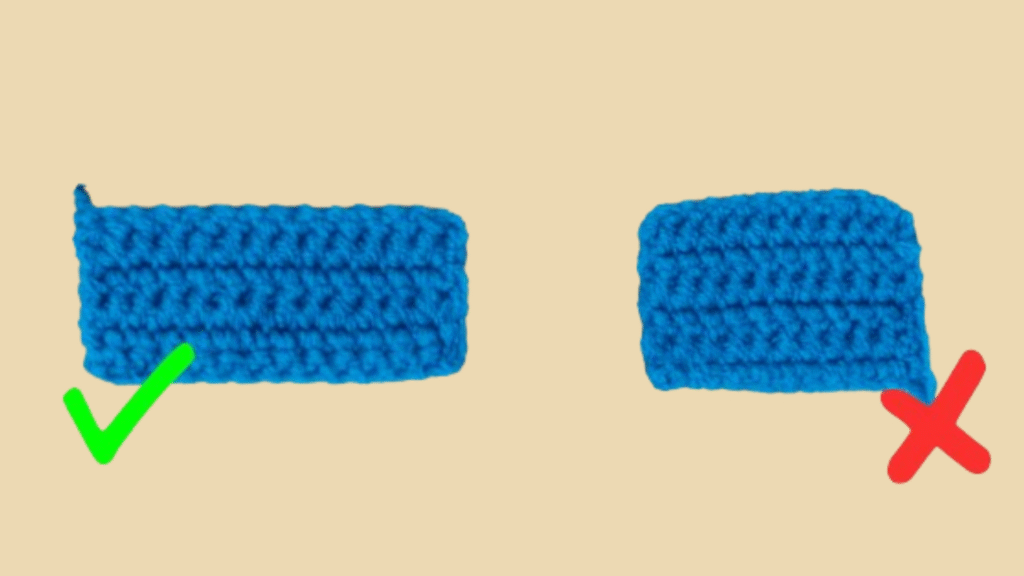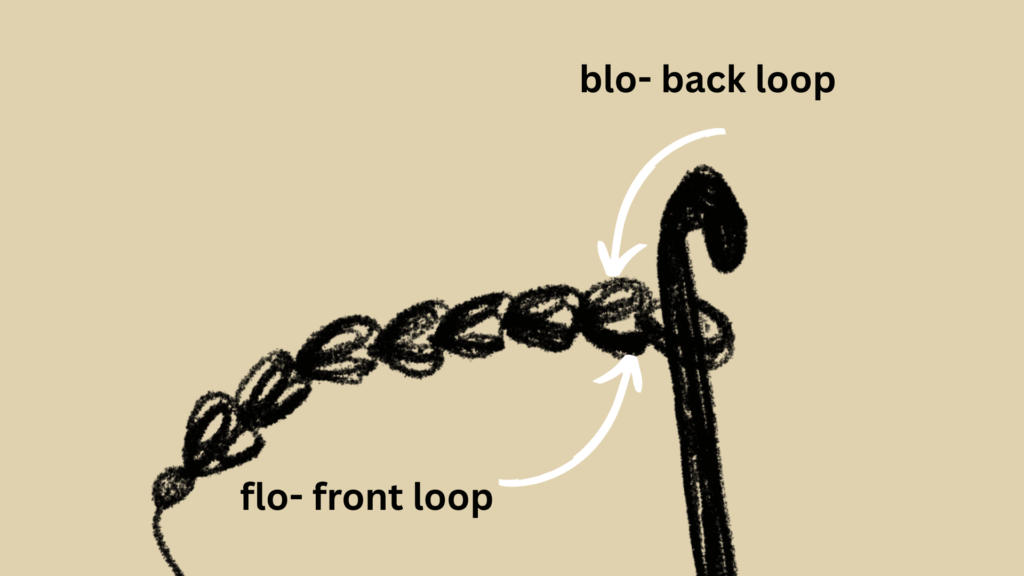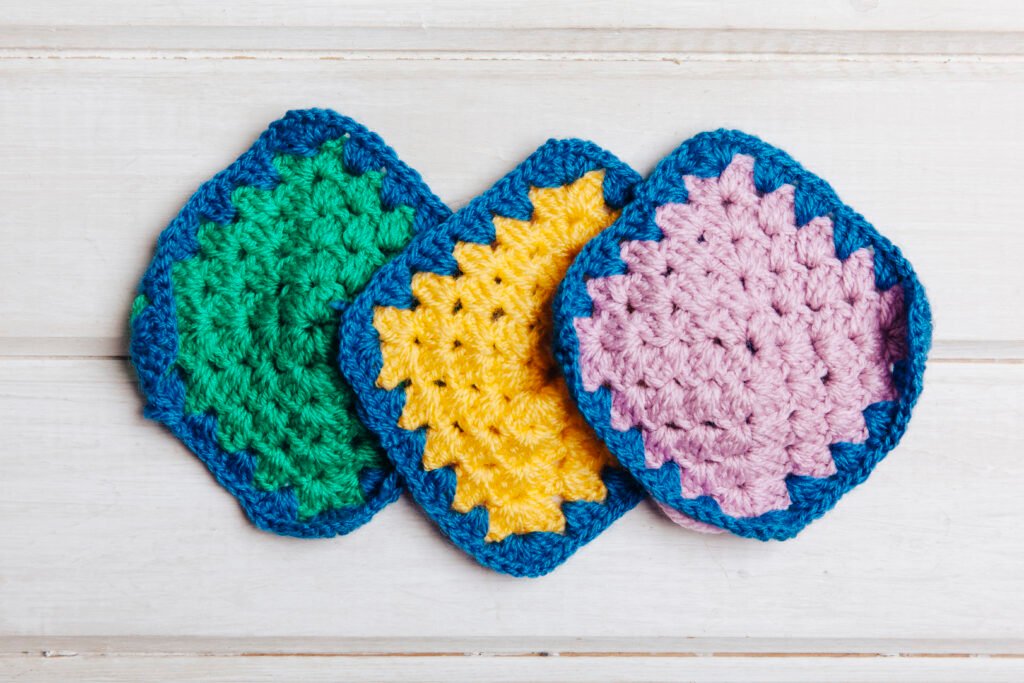Learning crochet is exciting, but let’s be honest, it also comes with its fair share of little “oops” moments.
That doesn’t mean you should give up or feel discouraged.
Mistakes are simply part of the learning journey, and the best part is, they’re usually easy to fix once you know how.
Every crocheter, even the most experienced ones has been there. The difference is, with time, they’ve learned how to recognize and correct those slip-ups.
In this guide, we’ll walk through the most common mistakes beginners make and show you exactly how to avoid or fix them, so you can keep stitching with confidence.
1. Uneven Tension

The mistake: Your stitches look tight in some places and loose in others, giving your fabric a bumpy or messy look.
The stiches might look similar to a beginner, but there are not, pay close attention to the arrow above, compare the first row to the second, there is clear difference in tension making the piece bumpy, uneven and unprofessional, although all the stitches are single crochet but the loose one are looking more like double crochet, and unless that was intentional in your design, this will ruin your piece.
The fix: Relax your hands and try holding your yarn the same way throughout your project. If you tend to crochet too tightly, go up one hook size. With practice, your tension will naturally even out.
another pro tip, just use two different hook sizes, go up one size than the recommended for the foundation chain then return to the recommended hook size as per your yarn label.
2. Adding or Losing Stitches

The mistake: Your project edges start looking wavy or slanted because you accidentally added or skipped stitches.
The fix: Count your stitches at the end of every row. Use stitch markers to mark the first and last stitch, so you never miss them.
3. Twisting the Foundation Chain
The mistake: Your first row looks twisted or curled, making it hard to work into, and that usually happen because you are using the wrong hook size.
The fix: Lay your foundation chain flat before starting Row 1, use the appropriate hook size.
You can also start with shorter chains until you feel comfortable keeping them straight.
4. Not Knowing Where to Insert the Hook
The mistake: Beginners often insert the hook into the wrong part of the stitch, especially when turning for a new row.
The fix: Learn the difference between front loop, back loop, and both loops. Most patterns use both loops unless otherwise stated.
the complete stitch will look like a braid or a V shape when you look at your piece from above, while the front loop is the closet one to you, and the back in the opposite side of the same stitch.

5. Crocheting Too Tightly
The mistake: Your fabric is stiff, and it feels like a struggle just to insert the hook.
The fix: Relax your grip! Hold your hook and yarn gently, and let the yarn glide. You can also try using a slightly larger hook until you get the hang of it.
how to actually choose the right hook size ?
each yarn ball come with it’s label, it is important to check it and make sure you are using the hook size for crochet not the needles which are for knitting.
6. Skipping Gauge Swatches
The mistake: You finish a project, and it’s way too small (or too big).
The fix: Before starting any garment or wearable project, make a small swatch to check your gauge. It only takes a few minutes but can save hours of wasted work later.
A swatch in crochet is simply a small sample piece of fabric you make before (or while) working on a project. It’s usually a square or rectangle where you practice a stitch, test your yarn, or check your gauge (the number of stitches and rows per inch).

7. Misreading Patterns and Abbreviations
The mistake: Mixing up stitches (sc, dc, sl st, etc.) or not understanding what the pattern means, if you are watching tutorial make sure you have watched it fully and understood it before start crocheting only to realize mid way that, it is confusing or its beyond your skill level or available materials.
The fix: Keep a list of crochet abbreviations handy. Start with simple patterns until you’re more confident reading instructions.
Bonus: Build Good Habits
- Always count stitches at the end of each row.
- Use stitch markers, especially in rounds.
- Take breaks to stretch your hands to prevent fatigue.
Final Thoughts
Mistakes are not a setback, they’re part of learning. Each one teaches you something new, and the more you practice, the more natural crochet will feel. So next time your project looks a little wonky, smile and remember: every crocheter has been there, and you’re getting better with every stitch.
✨ Keep your hook moving, and enjoy the journey!




1 Comment